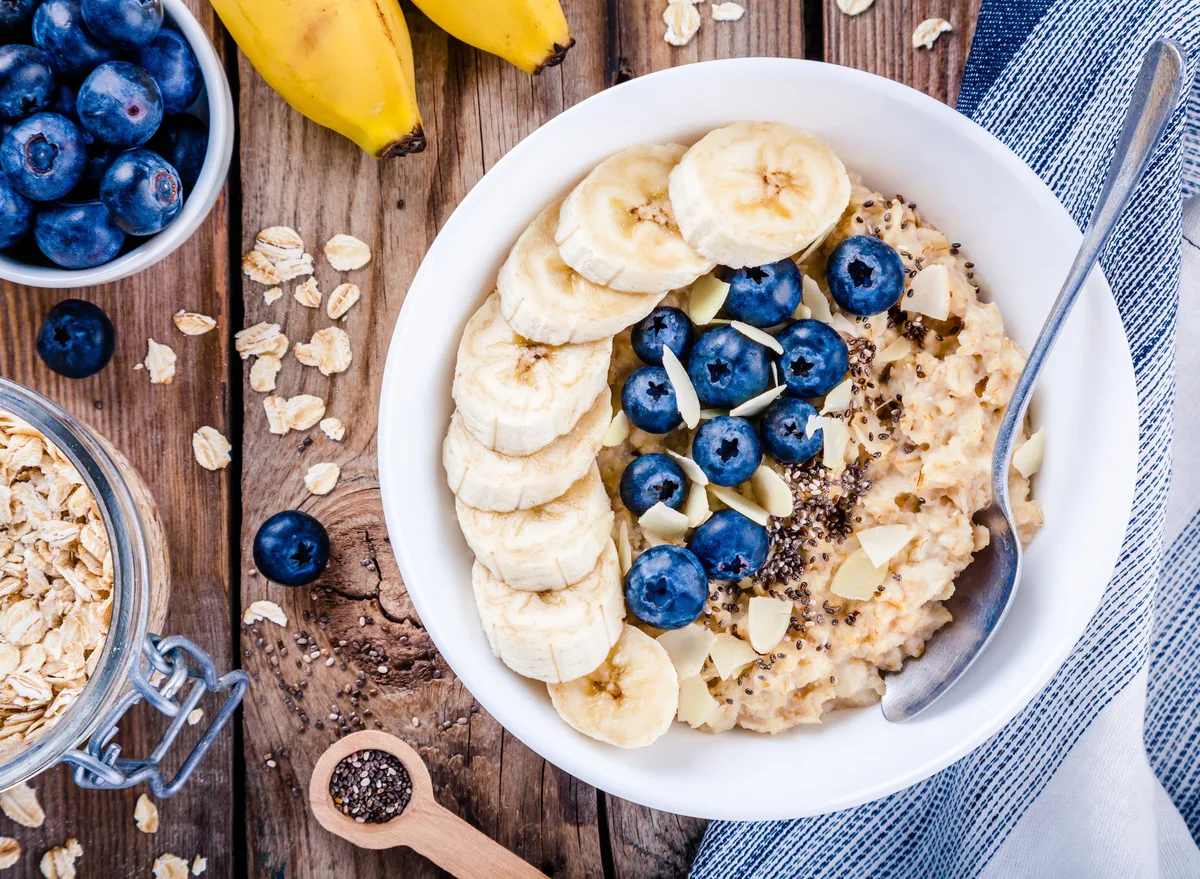
Are you looking to enhance your daily diet with wholesome grains that promote optimal health? Look no further! In this article, we’ll explore the TOP 10 healthiest whole grains that you can easily incorporate into your meals. These grains are not only packed with essential nutrients but also provide numerous health benefits. From improved digestion to reduced risk of chronic diseases, these whole grains have it all. So, let’s dive in and discover the goodness of these grainy superstars!
TOP 10 Healthiest Whole Grains to Add to Your Daily Diet
Whole grains are an excellent addition to any diet due to their rich nutrient profile and high fiber content. They offer a range of health benefits, including improved heart health, weight management, and increased energy levels. Here are the top 10 healthiest whole grains that you should consider adding to your daily diet:
- Quinoa
- Oats
- Brown Rice
- Barley
- Bulgur
- Whole Wheat
- Millet
- Amaranth
- Buckwheat
- Farro
Let’s explore each of these grains in more detail and uncover their unique qualities that make them valuable for your well-being.
1. Quinoa
Quinoa, pronounced keen-wah, is a versatile whole grain that originates from South America. It is highly regarded for its exceptional protein content, making it an excellent choice for vegetarians and vegans. Additionally, quinoa is gluten-free, making it suitable for individuals with gluten sensitivities or celiac disease. This grain is also a good source of dietary fiber, vitamins, and minerals, promoting digestive health and providing essential nutrients.
2. Oats
Oats are a classic whole grain that has gained immense popularity due to their numerous health benefits. They are packed with soluble fiber, which helps lower cholesterol levels and stabilize blood sugar levels. Oats are also a great source of energy, making them an ideal breakfast option to kick-start your day. Whether you enjoy them in oatmeal, granola, or baked goods, oats are a wholesome choice that provides essential nutrients and keeps you feeling satisfied.
3. Brown Rice
Brown rice is a nutritious alternative to white rice, as it undergoes minimal processing, retaining its bran and germ layers. This means it retains more fiber, vitamins, and minerals compared to its refined counterpart. Brown rice is rich in manganese, selenium, and magnesium, essential for maintaining healthy bones and reducing the risk of chronic diseases. Swap out white rice for brown rice to add more nutritional value to your meals.
4. Barley
Barley is an ancient grain that offers numerous health benefits. It contains a type of soluble fiber called beta-glucan, known for its cholesterol-lowering properties. Barley also helps regulate blood sugar levels and supports healthy digestion. Whether used in soups, stews, or salads, barley adds a nutty flavor and a satisfying texture to your meals while contributing to your overall well-being.
5. Bulgur
Bulgur, a staple in Middle Eastern cuisine, is a form of cracked wheat that is parboiled and dried. It is a good source of dietary fiber, protein, and essential minerals such as manganese and magnesium. Bulgur has a quick cooking time, making it convenient for busy individuals. It can be used as a base for salads, pilafs, or even in baked goods, providing a nutritious boost to your diet.
6. Whole Wheat
Whole wheat is a whole grain that retains all three parts of the grain—the bran, germ, and endosperm. This makes it a rich source of fiber, vitamins, and minerals. Whole wheat products, such as bread, pasta, and tortillas, are widely available and can be easily incorporated into your daily meals. Opting for whole wheat over refined wheat products can help lower the risk of heart disease, aid in weight management, and promote digestive health.
7. Millet
Millet is a gluten-free grain that has been cultivated for thousands of years. It is highly nutritious, containing high levels of protein, dietary fiber, and essential minerals like magnesium and phosphorus. Millet is a versatile grain that can be used in porridges, side dishes, or as a replacement for rice. Its mild, nutty flavor adds a delightful touch to various recipes while providing a range of health benefits.
8. Amaranth
Amaranth is an ancient grain that was a staple food for the Aztecs and Incas. It is rich in protein, containing all the essential amino acids, making it a valuable addition to vegetarian and vegan diets. Amaranth also provides an abundance of dietary fiber and minerals like calcium and iron. With its earthy and nutty flavor, amaranth can be used in porridges, salads, or as a thickening agent in soups, adding both taste and nutritional value.
9. Buckwheat
Despite its name, buckwheat is not a true grain but a fruit seed related to rhubarb and sorrel. It is gluten-free and contains high-quality protein. Buckwheat is a rich source of antioxidants, particularly rutin, which supports heart health and improves blood circulation. Its distinct flavor pairs well with both sweet and savory dishes, making it a versatile ingredient for pancakes, noodles, or as a base for grain bowls.
10. Farro
Farro is an ancient wheat grain that has a delicious nutty flavor and chewy texture. It is a good source of protein, fiber, and essential nutrients such as magnesium and zinc. Farro is often used in salads, risottos, or as a side dish, adding a hearty and nutritious element to your meals. Incorporating farro into your diet can contribute to improved digestion and increased satiety.
Frequently Asked Questions (FAQs)
- Q: How can I incorporate whole grains into my daily diet?
- A: You can incorporate whole grains into your daily diet by replacing refined grains with whole grain alternatives. For example, opt for whole wheat bread instead of white bread or choose brown rice instead of white rice. You can also experiment with different whole grain options such as quinoa, oats, or barley in your recipes.
- Q: Are whole grains suitable for individuals with gluten intolerance?
- A: Yes, many whole grains like quinoa, oats, millet, and buckwheat are naturally gluten-free and can be enjoyed by individuals with gluten intolerance. However, it is important to ensure that the grains are not contaminated with gluten during processing.
- Q: Can whole grains help with weight management?
- A: Yes, whole grains are rich in fiber, which can help you feel fuller for longer, potentially aiding in weight management. Additionally, the nutrients and complex carbohydrates in whole grains provide sustained energy, reducing the likelihood of overeating.
- Q: How should I cook whole grains to maximize their nutritional benefits?
- A: Each whole grain has its own recommended cooking method. However, in general, it is advisable to cook whole grains using the absorption method, which involves simmering them in a specific amount of water or broth until tender. This method helps retain the nutrients and flavors of the grains.
- Q: Can whole grains be part of a low-carb diet?
- A: While whole grains do contain carbohydrates, they also provide essential nutrients and dietary fiber. If you’re following a low-carb diet, you can still incorporate small portions of whole grains while keeping an eye on your overall carbohydrate intake.
- Q: Are whole grain products readily available in stores?
- A: Yes, whole grain products have gained popularity in recent years, and many grocery stores now offer a wide range of options. Look for labels that specify “whole grain” or “100% whole wheat” to ensure you’re choosing the right products.
Conclusion
Incorporating the TOP 10 healthiest whole grains into your daily diet is a simple and effective way to boost your nutrition and overall well-being. From the versatile quinoa to the classic oats and the nutty farro, these grains offer a myriad of health benefits while adding variety and flavor to your meals. Whether you’re seeking to improve heart health, manage weight, or enhance digestion, these whole grains have got you covered. So, why wait? Start enjoying the goodness of these wholesome grains and reap the rewards of a healthier lifestyle.




